“Rachel Weeping” was commissioned by the Knights of Columbus of St. Richard Catholic Church in Jackson, MS. They wanted to emphasize “Respect for all Human Life” with a monument that was also a memorial to the loss of innocent life. The concept of the sculpture is based on the scripture in Jeremiah 31:15 “Behold, Rachel weeping for her children, and she would not be comforted because they were no more.”
View the bronze casting process from the original clay to the finished monument of “Rachel Weeping” at this link.
Photos: Barbara Gauntt
The symbolism of “Rachel Weeping” is rich in meaning. There are many elements created within the sculpture that poignantly reflect the message of the monument. Below are photos and descriptions of these various symbols.
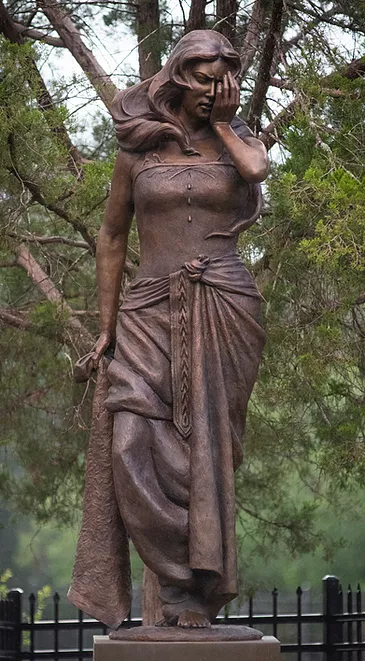
The Baby Blanket & Drapery Fold
There is dramatic movement in the drapery and hair of the figure of Rachel.
Bernini, the Baroque sculptor who created most of the sculptures in St Peter’s in Rome, used the movement of the hair and the drapery to reflect the inner spirit and emotion of the figure. In the figure of Rachel, this movement reflects her turmoil and grief.
To emphasize to the viewer that her mourning is over the loss of innocent life, there is sharp contrast between the drapery of Rachel and the fabric of the blanket. Instead of dramatic movement the baby blanket is inert, with gravity pulling on it so the folds of the blanket are very heavy; representing the heaviness of loss.
There is only one other place in the sculpture that this particular fold is repeated. And that is a fold tucked into the front of the belt where the viewer will find that same straight gravity laden fold.
As the fold starts at the feet and goes up to the womb, one discovers that the fold is also echoed in the blanket itself and ties in visually and mentally the grieving mother and the loss of the child.
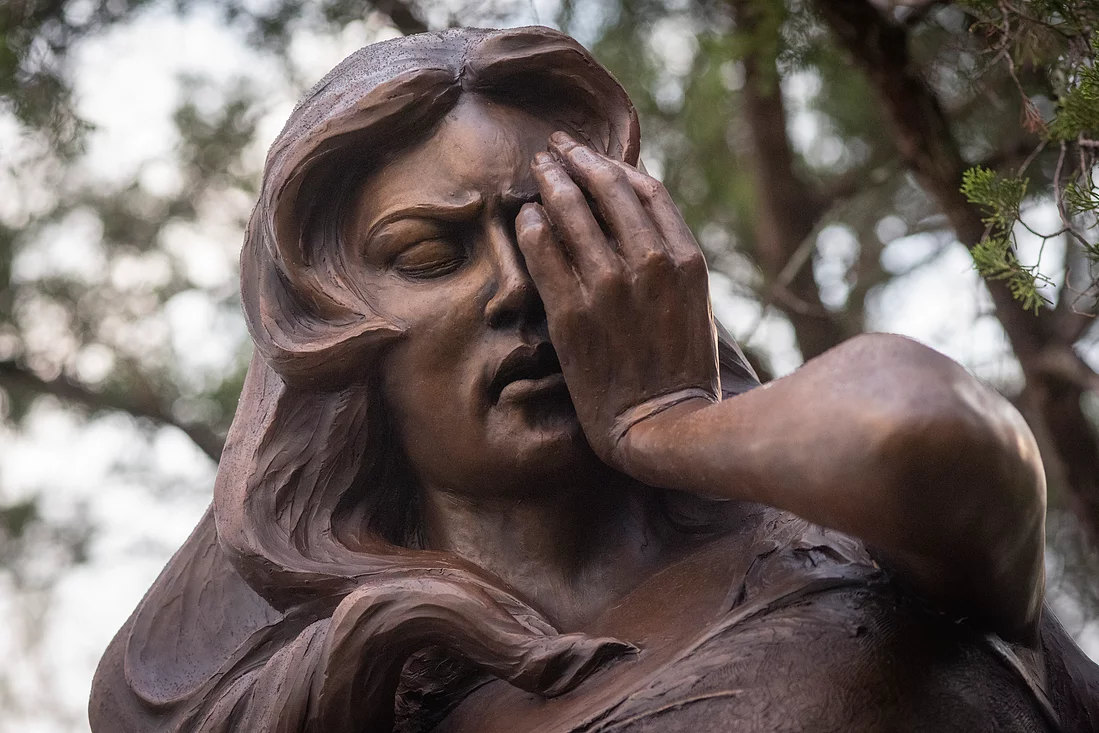
Loose hair, barefoot and a hand to the face are all universal and ancient symbols of grief, mourning and humility.
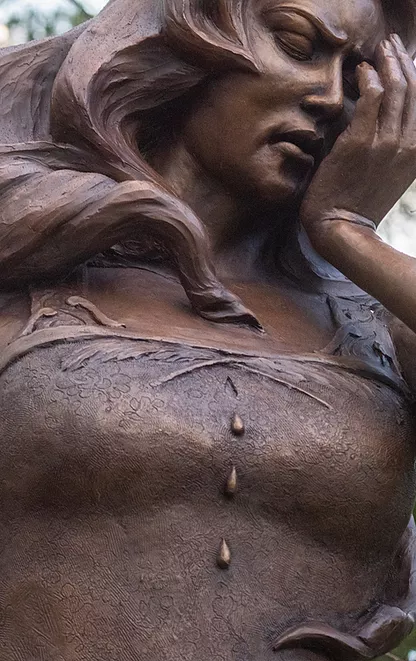
Palms have long been used as symbols in Sacred Art. The crossed palms at the top of Rachel’s bodice represent the Palm of Martyrdom – the martyrdom of innocent life, specifically the life of a child, and the Palm of Victory.
The Palm of Victory represents the comfort found in Christ for those mourning the loss of a child.
The Tears represent the grieving over the lost life of a child. The first tear is recessed and represents the hidden tear of God, the following tears symbolize: the tear of the child, the tear of the mother and the tear of the father, because all of them are affected in the loss of a child’s life.

On the back of the figure of Rachel, everything points to the hand holding the baby blanket. The waves of the hair and the folds of her skirt all move towards her hand. This repeated line brings the viewers eye back over and over again to the hand holding the blanket.
To emphasize the importance of the blanket, there is an ancient type of penannular brooch that strengthens the visual line that leads the viewers eye to Rachel’s hand.
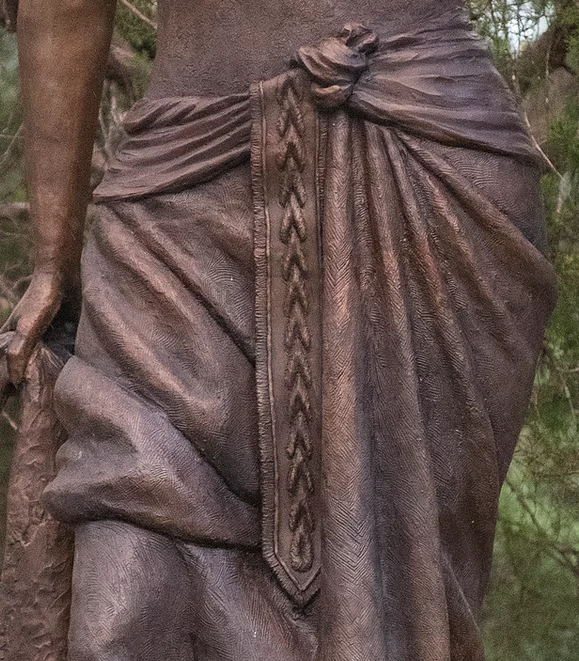
On the belt hanging down there is embroidered cascading tears that represent the journey of grief. Mourning is not over and done with in one day, it is a journey and though it may lessen with time, we may carry a part of it all of our lives. For the Christian, Jesus walks with us in this journey and we have hope and comfort in Him.
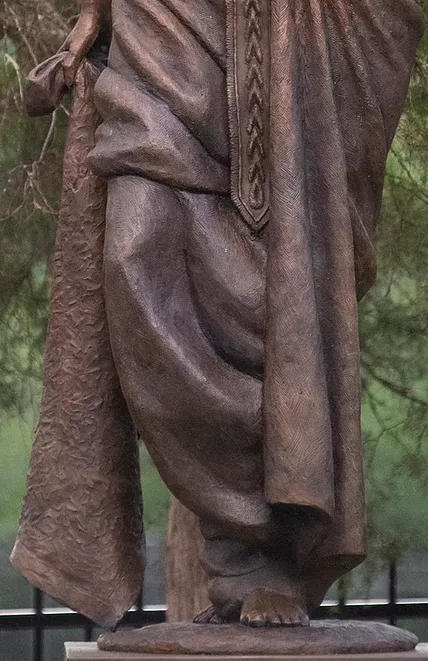
As the baby blanket represents the loss of a child, no sculpture tools were used on the texture of the blanket and the satin binding; just the sculptor’s hands. With the fingerprints of the sculptor seen among the loose treatment of the fabric, this type of texture gives an organic reality to the symbol of the baby blanket.
There is only one other place in the monument that also received this specific texture; that is the ground. This reflects the scripture in Genesis 2:7, KJV. “In the sweat of thy face shalt thou eat bread, till thou return unto the ground; for out of it wast thou taken: for dust thou art, and unto dust shalt thou return.”
So the loss of a child becomes reflected through combined texture found in the baby blanket and the ground.
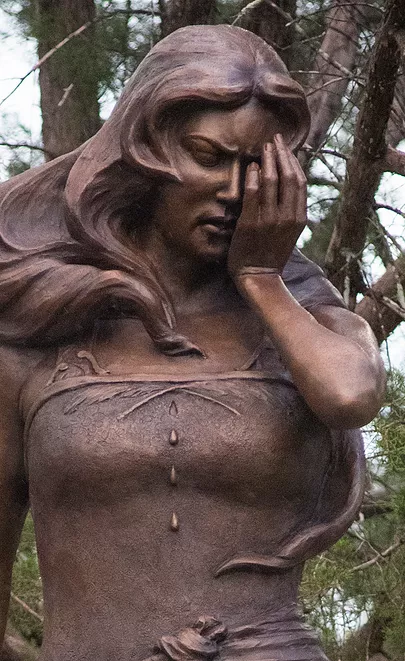
Seen from the front of Rachel there is a specific curl that comes across the cheek on her face, another one that points to her heart, and one that points to the womb. These three curls represent the affect of grief and mourning on the mind, the heart and soul, and on the body.

